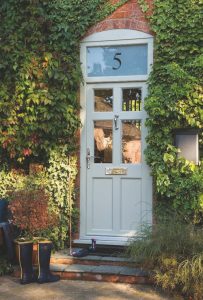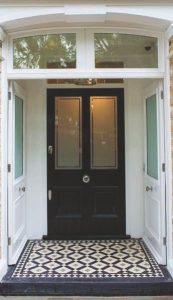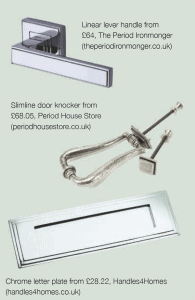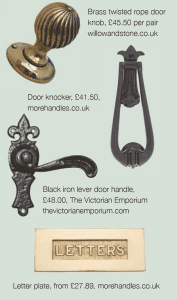Mind the Doors!
Reinstating period door features in your home is a great way of making your home more harmonious and can also add value.
Whilst plenty of thought is given to restoring windows and fireplaces, sometimes doors and door furniture are not always given the consideration they deserve.
Period timber doors add solidity and charm to a property that is hard to beat – and if any of the original door furniture remains, all the better. Panel doors, common throughout the Georgian, Victorian and Edwardian eras, in various designs, were often shunned during the 1960s and boarding was sometimes nailed over both sides, hiding the real door beneath. Discovering the originals underneath these boards is one of those moments that makes renovation rewarding.
If your doors are coated in years worth of gloss paint, they can be chemically dipped or sandblasted, with many specialists offering a collection and delivery service.
The stripped door can then be waxed, varnished or painted as you wish. If the doors remain looking damaged or patchy, then applying a limed finish is a good idea and is actually a traditional finish for doors, floorboards and furniture.
Doors that have warped or have become rotten over time and are sticking in their frames can be repaired, usually for less than it would cost to replace.
It is vital not to cut corners when buying doors,
If the doors have been replaced – particularly common with front doors which are often replaced with unsuitable PVCu designs – reclamation yards usually have a good stock of all styles. Take your measurements along with you and be prepared to sift through quite a few. Most reclamation yards also offer a reconditioning service, at an extra cost.
Door furniture
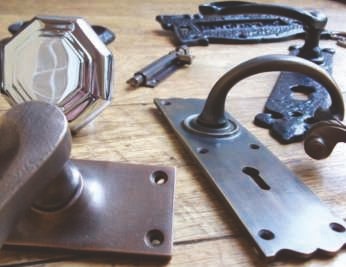
Before choosing your door furniture it is important to see as many different options as possible. Researching the type of door furniture which was in your house at the time it was built can be an adventure in itself. Doorknobs have been made from lots of different materials over the years, from brass and nickel to chrome and glass. If you wish to go with the era, brass and porcelain were most popular in Victorian times, wooden doorknobs were favoured in Edwardian houses and polished nickel or chrome was used in the Art Deco period.
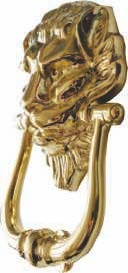
Knock out
Founded in 2010, Grace and Glory has a passion for producing stylish items for the modern period home. This glorious lion’s head door knocker cast in solid brass has a polished finish and beautiful detailing. (graceandgloryhome.co.uk)
Ironmongery
Bell Pull or Push
Originally, the pull would operate the bell via a cable, but with the advent of electricity, push buttons became more common.
Escutcheon
The cover for the keyhole would often be highly decorated and made from the same material as the other fittings.
Finger plate
Finger plates were often in pairs: the larger one above the knob and the smaller plate below. They were sometimes in glass or porcelain
Knocker
The knocker, if present, was usually placed centrally on the door, and at about head height.
Letter Plate
Letter plates or boxes came in after the introduction of pre-paid postage stamps. They were in brass and iron, and elaborate. Commonly the plate was cast or stamped from a sheet of
Lock
Mortise locks, set into the closing
Numerals
Often painted onto the glass above the front door, or on the woodwork. Alternatively, the numbers would be on an enamelled or engraved plate. In the case of the latter, black wax could be used to highlight the numerals.
Pull
Front doors sometimes had a special large knob or a handle for pulling the door closed.
Art Deco
The Art Deco period started in the 1920s and has remained popular thanks to its modernist styling and use of
Victorian
Cast iron was a popular metal used on door furniture in the
Posted in: General
